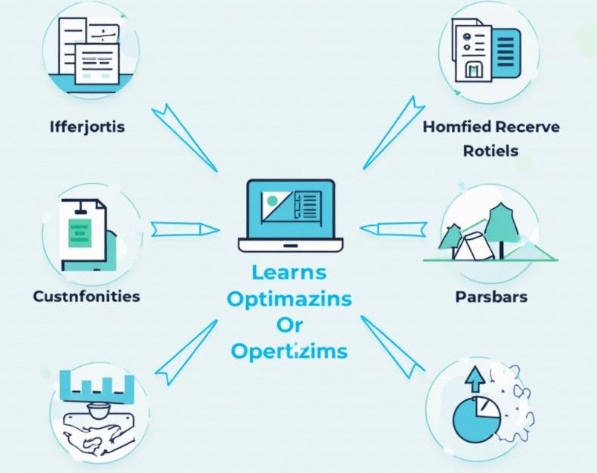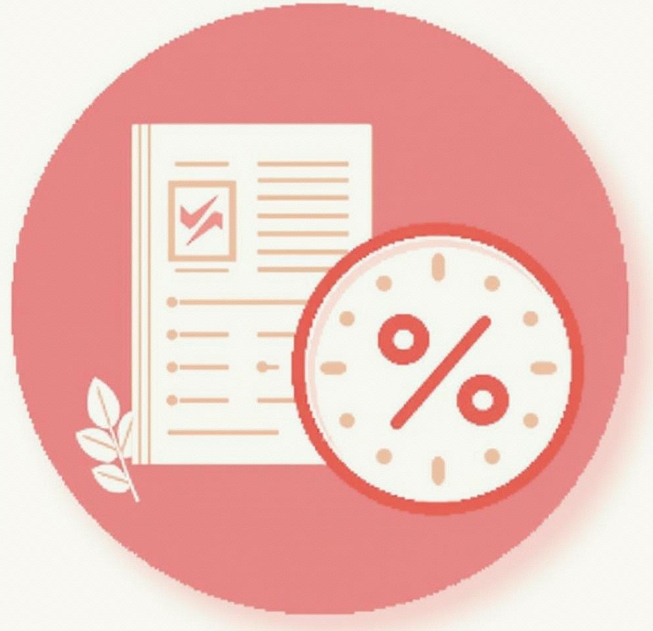How to improve user conversion rates through mall development?
- latest articles
- 1.DApp Development & Customization: Merging Diverse Market Needs with User Experience 2.Analysis of the Core Technical System in DApp Project Development 3.How to achieve cross-chain interoperability in Web3 projects? 4.How does the tokenization of points reconstruct the e-commerce ecosystem? 5.How to Set and Track Data Metrics for a Points Mall? 6.What is DApp Development? Core Concepts and Technical Analysis 7.Inventory of commonly used Web3 development tools and usage tips 8.Development of a Distribution System Integrated with Social E-commerce 9.Six Key Steps for Businesses to Build a Points Mall System 10.What is DApp Development? A Comprehensive Guide from Concept to Implementation
- Popular Articles
- 1.Future Trends and Technology Predictions for APP Development in 2025 2.Analysis of the DeFi Ecosystem: How Developers Can Participate in Decentralized Finance Innovation 3.From Zero to One: How PI Mall Revolutionizes the Traditional E-commerce Model 4.DAPP Development | Best Practices for Professional Customization and Rapid Launch 5.Recommended by the Web3 developer community: the most noteworthy forums and resources 6.From Cloud Computing to Computing Power Leasing: Building a Flexible and Scalable Computing Resource Platform 7.How to Develop a Successful Douyin Mini Program: Technical Architecture and Best Practices 8.Shared Bike System APP: The Convenient Choice in the Era of Smart Travel 9.How to Create a Successful Dating App: From Needs Analysis to User Experience Design 10.From Design to Development: The Complete Process of Bringing an APP Idea to Life
With the rapid development of the e-commerce industry, more and more businesses and merchants are focusing on how to enhance user conversion rates through mall development. User conversion rate refers to the proportion of visitors to a website or application who ultimately complete predetermined goals such as making a purchase or registering. This metric directly impacts a company's profitability and market competitiveness. Therefore, improving user conversion rates has become a crucial topic in the development process of e-commerce platforms.
This article will explore how to enhance user conversion rates in malls by optimizing mall features, improving user experience, increasing interactivity, and enhancing product presentation from various aspects of mall development.
I. User Experience First: Optimizing the Mall's Interface and Operational Flow
User experience (UX) is one of the keys to the success of an e-commerce platform. If users encounter cumbersome operational processes, complex interface designs, or slow page loading speeds while browsing the mall, they are likely to lose patience and eventually leave. Therefore, optimizing the mall's user interface (UI) and operational flow is the first step to improving conversion rates.
1.1 Clear and Concise Homepage Design
A clear and concise homepage design can effectively enhance the user's browsing experience. The homepage is the first impression users get when entering the mall; it should showcase the mall's core advantages and best-selling products while avoiding overly cluttered layouts that may cause visual fatigue. For example, attract user attention with appealing banners, activity recommendations, and hot product modules, while avoiding excessive advertisements and redundant information.
1.2 Smooth Shopping Process
Simplifying the shopping process directly relates to user conversion rates. Optimize the shopping cart functionality to allow users to easily view and modify cart contents and proceed to checkout with one click. The checkout page should avoid overly complex steps and reduce the number of information fields users need to fill out. Features like one-click login and automatic address filling can significantly boost users' purchase intent.
1.3 Mobile Optimization
With the widespread adoption of mobile internet, more and more users are choosing to shop via their phones. Therefore, the mobile version of the mall requires special attention to ensure fast page loading speeds and simple, smooth operations. Responsive design, which automatically adjusts the page layout based on the device, is an important means to enhance user experience.
II. Precise Product Recommendations: Leveraging Big Data and AI to Enhance User Engagement
Through mall development, merchants can collect vast amounts of user data, including browsing history, purchase records, and search habits. This data provides substantial support for precise product recommendations. By utilizing big data analysis and artificial intelligence algorithms, merchants can offer personalized shopping experiences, thereby improving conversion rates.
2.1 Intelligent Recommendation Systems
Currently, many e-commerce platforms use recommendation systems that analyze users' historical behaviors and interest preferences through algorithms to suggest products that match their needs. For instance, when a user browses a particular product, the platform can recommend related or similar items, increasing the chances of a purchase. Additionally, using collaborative filtering algorithms, the system can recommend products purchased by other users, further boosting conversion rates.
2.2 Dynamic Adjustment of Recommendations
The mall's recommendation content should not be static but dynamically adjusted based on users' real-time behaviors. For example, when a user is browsing an electronic product, the mall can dynamically update the recommended content to show more related accessories or promotional activities, helping the user make a purchase decision. Dynamic recommendations make users feel that the mall "understands" their needs, thereby enhancing their shopping experience.
2.3 Social Recommendations
In addition to algorithmic recommendations, social recommendations are an effective way to improve conversion rates. Social recommendations rely on social platforms and user reviews, encouraging users to share their shopping experiences and view other users' evaluations and purchase records. This "word-of-mouth effect" can enhance users' trust in products and facilitate purchase decisions.
III. Strengthening Trust Mechanisms: Boosting User Purchase Confidence
In e-commerce, user trust in products and the platform is a key factor in deciding whether to make a purchase. How to enhance users' sense of trust through mall development has become an important topic for improving conversion rates.
3.1 Secure Payment Guarantees
Secure payment is the foundation for improving user conversion rates. The mall needs to offer users multiple payment methods, such as Alipay, WeChat Pay, and bank card payments, and ensure the security of the payment process. Using SSL encryption technology to protect users' payment information enhances their sense of security. Displaying security certification logos on the payment page can also boost user trust.
3.2 Clear Return and Exchange Policies
Clear and transparent return and exchange policies are another important factor in building user trust. Merchants should prominently display clear return and exchange policies on the mall's pages, letting users know they can return or exchange products without worry if issues arise. The clearer the policy, the stronger the user's purchase confidence, naturally leading to higher conversion rates.
3.3 User Reviews and Rating Systems
User reviews and rating systems are essential tools for enhancing trust in the mall. After purchasing a product, users can leave genuine reviews, which other users can refer to when making purchase decisions. Merchants can encourage users to write honest reviews by offering incentives (such as coupons or points), increasing the credibility and appeal of products.
IV. Promotions and Limited-Time Discounts: Creating Urgency to Boost Conversion Rates
Promotional activities are common methods for e-commerce platforms to improve user conversion rates. By designing diverse promotional activities, merchants can effectively attract users to make purchases, thereby enhancing conversion rates.
4.1 Limited-Time Discounts and Flash Sales
Limited-time discounts and flash sales create a sense of urgency, prompting users to make purchase decisions quickly. For example, the mall can set time-limited discounts on products or launch limited-quantity flash sales, making users feel the pressure of "missing out," which boosts purchase conversions.
4.2 Spend-and-Save and Coupon Strategies
Spend-and-save activities and coupon strategies are also effective ways to improve user conversion rates. The mall can set up promotions where spending a certain amount reduces the total cost or issue different types of coupons to new and returning users to encourage purchases. This approach stimulates users' desire to spend and increases order conversions.
4.3 Membership and Points Rewards
By implementing membership systems and points rewards, the mall can increase user loyalty and boost conversion rates. Users can earn points after purchasing products, which can be exchanged for coupons or discounts, effectively encouraging repeat purchases. Additionally, membership systems provide merchants with more precise user data to help optimize recommendation systems.
V. Optimizing Logistics and After-Sales Service: Enhancing the User Purchase Experience
Logistics and after-sales service directly impact the user's purchase experience. Optimizing these aspects not only improves user satisfaction but also increases conversion rates.
5.1 Improving Delivery Speed and Experience
Logistics and delivery are crucial components of an e-commerce platform. Merchants should partner with reliable logistics companies to ensure timely delivery of products to users. Providing real-time tracking services allows users to monitor their package status, enhancing their shopping experience. Additionally, the mall can offer free delivery or installment delivery services for bulk orders.
5.2 Enhancing After-Sales Service
Good after-sales service can strengthen users' trust and facilitate their purchase decisions. The mall can set up customer service personnel to provide online support and issue resolution. To boost users' purchase confidence, measures like "hassle-free returns and exchanges" and "extended warranty periods" can be offered.
VI. Data Analysis and A/B Testing: Continuously Optimizing Mall Conversion Rates
Improving conversion rates requires continuous optimization and refinement. Through data analysis and A/B testing, merchants can constantly adjust the mall's features and design to find the most effective solutions.
6.1 Data Analysis
Data analysis helps merchants understand user needs and behaviors. By analyzing data such as user browsing paths, click-through rates, and purchase conversion rates, merchants can identify problematic pages or features and make necessary optimizations.
6.2 A/B Testing
A/B testing is a common optimization method where merchants compare two or more versions of a page design or feature to find the most effective strategy for improving conversion rates. For example, testing different colors for the "Buy" button or different product display methods allows merchants to make adjustments based on test results, ultimately maximizing conversion rates.
Conclusion
Improving user conversion rates is one of the core goals for the continuous development of e-commerce platforms. By optimizing the mall's user experience, enhancing the intelligence of recommendation systems, strengthening trust mechanisms, implementing effective promotional strategies, and improving logistics and after-sales service, merchants can stand out in the competitive market, boost user conversion rates, and drive sustained business growth. As technology advances, the methods for mall development will become more diverse, requiring merchants to continuously monitor user needs and market changes, constantly optimizing the platform to achieve the best conversion outcomes.
-

How does the tokenization of points reconstruct the e-commerce ecosystem?
With the continuous advancement of internet technology and the gradual prolifera···
-

How to Set and Track Data Metrics for a Points Mall?
With the rapid development of the e-commerce industry, points malls, as a common···
-

Development of a Distribution System Integrated with Social E-commerce
With the rapid development of internet technology, the e-commerce industry has e···

 Blockchain
Blockchain












